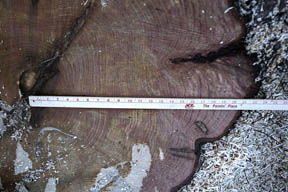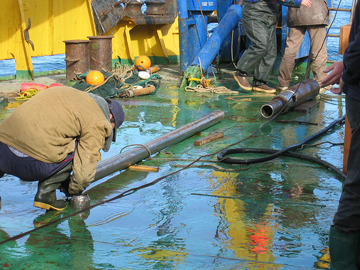My grandmother died 23 years ago this week, just shy of her 100th birthday. During her life, she pioneered a homestead with her father and brothers, farmed large tracts of land with her husband, built two family homes, raised 12 kids, and fed her umpteen grandchildren countless farm-fresh meals of traditional French cuisine.
The broad brushstrokes of her life that I know are supplemented by a few stories and a handful of photographs.
When I visited her in her final weeks, I marveled at the map of her life that was her face. If only there was a way to read a person’s history in crow’s feet, wrinkles, wattles and jowls.
One can do that, to a limited extent, by scanning their bones and chemically analyzing their hair, but both of these records of a person’s diet, activity, health and environment extend only a short time into the past. Hair grows at a rate of about one centimetre each month, and is cut regularly. Few people tolerate the hassle of Rapunzel-like dos these days. Bone, too, regenerates constantly, with new cells replacing old. Researchers estimate the bone in humans is gradually replaced every seven or so years.
Other organisms have more reliable built-in year counters. The ear bones of fish, for instance, grow a new layer each year. Crocodile teeth document the animals’ passing years in the same way, as do teeth of extinct meat-eating dinosaurs.
Trees, of course, grow a new ring of cambium and xylem every growing season. Cross-sections of a tree trunk catalogue the conditions and major events of the tree’s life, including fires that scarred and charred the tree, insects that burrowed beneath its bark, and amount of available water and sun. The more stress a tree experiences in a given year, the thinner the new tissue it grows.
 Tree-ring diaries help researchers reconstruct past environments. For example, the trunks of prehistoric Douglas-fir trees pulled from southern Vancouver Island’s Heal Lake are now stored on the property of the Pacific Forestry Centre, in Saanich. The cut ends of the trunks show a sudden change in tree-ring thickness indicating a dramatic shift in climate in the region about 4,000 years ago.
Tree-ring diaries help researchers reconstruct past environments. For example, the trunks of prehistoric Douglas-fir trees pulled from southern Vancouver Island’s Heal Lake are now stored on the property of the Pacific Forestry Centre, in Saanich. The cut ends of the trunks show a sudden change in tree-ring thickness indicating a dramatic shift in climate in the region about 4,000 years ago.
When dealing with living trees, foresters drill into the tree and extract a core sample—a skinny plug of the tree’s protective bark, living outer tissues, and inner heartwood. A core sample can provide a register of age and year-by-year growth.
Mining and petroleum-exploration companies drill core samples from the earth when they prospect for minerals or oil and gas. The samples they extract contain all the layers of rock and the kinds of rock underneath the surface at the locations they drill, and indicate whether the companies should take closer looks there.
Nearer to home, local scientists have extracted cores from the bottom of Saanich Inlet. Because a deep-water sill at the mouth of the inlet blocks ocean currents, sediment has collected, undisturbed, on the Inlet’s floor in thin, annual layers for thousands of years. These layers catalogue past climate and ocean conditions, and long-ago earthquakes. The researchers use this information to help predict what will happen in the region as the climate changes and to determine how future earthquakes may affect the region.
Other researchers are collecting sediment cores from Begbie Lake and the Sooke Lake Reservoir, in Greater Victoria’s watershed. By analyzing pollen and charcoal preserved in the core-sample layers, the scientists hope to reconstruct the region’s past environment. Evidence suggests that, about 12,000 to 7,000 years ago, the region experienced a warmer and drier climate than it does today, and sheltered a different mix of tree species and other plants.
Coring trees, rocks and sediment reveals ancient histories, but the technique is less than helpful in determining the personal events and conditions of one human life. Derived from the French word, coeur (heart), a core sample can reveal hidden properties and secret histories of an object or a place. However, there is no way to sample a person’s core history—even when they wear the tracks of that history on their face.
—30—
A version of this editorial appears in the August 16, 2015, Victoria Times Colonist.


You must be logged in to leave a reply.